Wavelet Transform
(adapted in part from http://venus.javeriana.edu.co/course/course-index.html)Wavelet transformation is a powerful tool for the analysis and synthesis of signals. Localization of signal characteristics in spatial (or time) and frequency domains can be accomplished very efficiently with wavelets. This allows us to simultaneously determine sharp transitions in the spectrum of the signal and in the position (or time) of their occurrence.
Wavelets have been recently used heavily in Compression technologies. Wavelets have the property that an image in the wavelet domain has areas of "less interest" corresponding to low wavelet values. So, compression can be achieved via a simple thresholding operation. This may account for the reason why JPEG2000 is based on the use of wavelets.
The basic structure of a wavelet transform is composed of recursive filtering and decimation, both of which are relatively easy to implement. The Kernel separability property in wavelet transform theory is an interesting feature that renders multidimensional wavelet transforms as a powerful tool for multidimensional signal processing.
The use of Wavelet Transform in numerical analysis seems to be very promising for it allows a very good representation of discontinuities, unlike the Fourier Transform. In addition, the Wavelet Transform produces sparse matrices and/or operators which can be processed with very low computational complexity.
The most attractive feature of the Wavelet Transform is its relationship with Sub-band Coding Systems and Filter Banks. The only difference between the Wavelet Transform and the filters in Sub-band Coding Systems is that the former are designed to have some regularity properties (many zeros at z = 0 or z = 3.141516 (pi)). Wavelet Theory provides new ideas and insights which certainly enrichs the important area of multirate filter banks.
Wavelet Transform theory can also be coupled with other techniques, like vector quantization or multiscale edges. This leads to powerful compression techniques for non-stationary signals. The fields of statistical signal processing, multiscale model of stochastic processes and analysis and synthesis of 1/f noise have shown interesting results when associated with the wavelet theory. Wavelet Packets, which correspond to arbitrary adaptive tree-structure filter banks is another very promising example.
The following experiment performs a one-level forward and inverse wavelet transform. It is based on Daubechies filters. In addition, a simple experiment of data compression is carried out by only utilizing the low-pass wavelet decomposition for image reconstruction. This can be seen as transmitting only this portion of the data through a communications channel with a 1:4 compression ratio. The forward wavelet transform is shown below
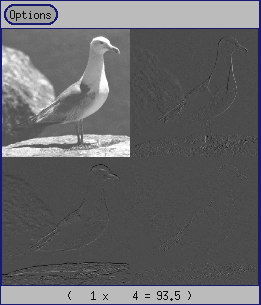 Forward
wavelet transform
Forward
wavelet transform
Observe the decomposition performed. In clockwise order and starting from the upper left corner of the image we have: 1) low-pass decomposition, 2) high-pass decomposition in the width direction, 3) high-pass decomposition in the height direction, and 4) high-pass decomposition in both width and height directions. The inverse wavelet transform is shown below
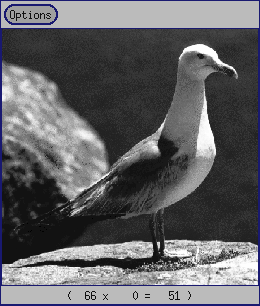 Inverse
wavelet transform
Inverse
wavelet transform
We extract the low-pass decompostion and use it to reconstruct the original image. NOTE: in doing so we can achieve a 1:4 compression ratio. The low-pass images is
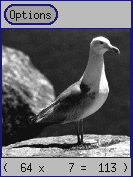 Low-pass image
Low-pass image
The reconstruction using the inverse wavelet transform yields
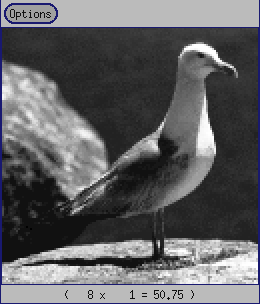 Reconstructed image
Reconstructed image
The difference between the original image and the reconstructed is
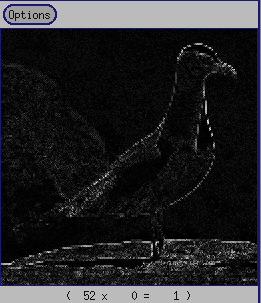 Difference .
Difference .
